(2031 products available)





 Ready to Ship
Ready to Ship



























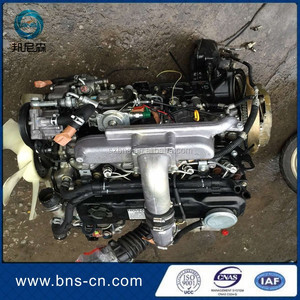


























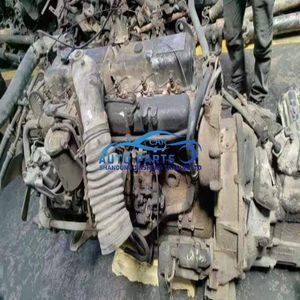














































































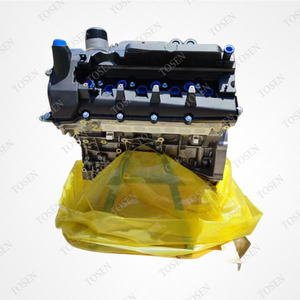







































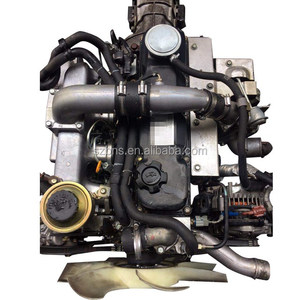
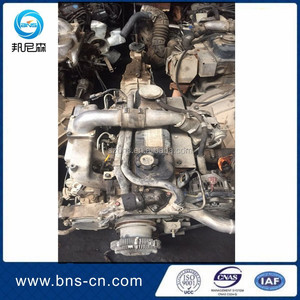



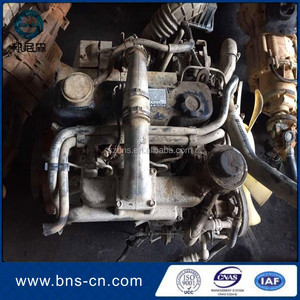
























The Navara dci engine is a type of diesel engine commonly used in the Nissan Navara, a popular pickup truck model. The Navara dci engine is designed to provide a balance of power, torque, and fuel efficiency, making it suitable for both on-road and off-road driving, as well as for towing and carrying heavy loads.
There are several Navara dci engine types, including the following:
2.5 dci engine
The Nissan Navara 2.5 dci engine is a diesel engine with a 2.5-liter displacement. It is known for its good balance of power and efficiency. The 2.5 dci engine generates around 140-190 horsepower and 320-450 Nm of torque, depending on the tuning and model year. This engine is suitable for general use, including everyday driving, light off-road, and towing capacities of up to 3,000 kg. It is also relatively fuel-efficient, making it a cost-effective choice for businesses and individuals who use it for commercial purposes or as a fleet vehicle.
2.3 dci engine
The Nissan Navara 2.3 dci engine is a more recent diesel engine option introduced in newer Navara models. This engine typically has a twin-turbocharged variant, providing even better performance and efficiency. The 2.3 dci engine generates around 160-230 horsepower and 380-550 Nm of torque, depending on the specific configuration. The higher torque output makes it particularly suitable for tasks requiring more pulling power, such as towing heavy trailers or transporting heavy cargo. The 2.3 dci engine also offers improved fuel efficiency compared to the 2.5 dci engine, especially in models with advanced engine management systems.
2.5 dci engine with variable geometry turbocharger (vgt)
Some Nissan Navara 2.5 dci engines are equipped with variable-geometry turbochargers (VGT). This technology allows for better control of the turbocharger's boost pressure across the engine's RPM range, resulting in improved throttle response, increased torque at lower speeds, and higher overall efficiency. The 2.5 dci engine with VGT is suitable for applications where precise control over the power delivery is essential, such as off-road driving or towing heavy loads in varied conditions.
The Nissan Navara dci is a popular pick-up truck that is well-known for its robustness and versatility.
Service:
Regular service is essential for the Navara DCI engine. Follow the service schedule in the owner's manual for oil changes, filter replacements, and inspections. Use genuine Nissan parts and fluids for optimal performance. Pay attention to the cooling system, including coolant level and condition, to prevent overheating. Check the air intake system for leaks or blockages that could affect engine performance and efficiency. Monitor the fuel system, including the fuel filter, for proper operation and cleanliness. Ensure the exhaust system is intact and functioning to meet emissions standards.
Tires:
Maintain proper tire pressure and tread depth for optimal grip and fuel efficiency. Rotate tires regularly for even wear and better handling.
Brakes:
Keep the braking system in top condition by checking brake pads, discs, and fluid levels. Replace worn components promptly for safe stopping power.
Suspension:
Inspect the suspension system, including springs, shocks, and joints, for a smooth and stable ride, especially when hauling heavy loads.
Electrical:
Check the battery, cables, and connections for reliable starting and powering of accessories like lights and audio systems. Monitor the engine management system (EMS) for optimal engine performance and efficiency. The EMS controls fuel injection, ignition timing, and emissions. Look out for warning lights on the instrument panel. These lights alert users to potential engine or vehicle system issues. Address any warning lights promptly to avoid further damage or decreased functionality.
Engine performance:
The Navara DCI engine is designed for balanced performance. Those who desire more power for towing or off-road use can consider engine tuning or modifications. Consult a professional mechanic or tuning specialist. The Navara DCI engine is turbocharged. Turbochargers improve engine efficiency and responsiveness, providing more power when needed. The Navara DCI engine's fuel injection system atomizes fuel for better combustion and fuel efficiency.
Navara dci engine maintenance tips:
Follow the manufacturer's recommended maintenance schedule for oil changes, filter replacements, and inspections. Use high-quality oil and filters for engine protection. Monitor fluid levels (engine oil, coolant, transmission fluid, etc.) and top up as needed. Pay attention to the cooling system, including coolant level and condition, to prevent overheating. Check the air intake system for leaks or blockages that could affect engine performance and efficiency. Monitor the fuel system, including the fuel filter, for proper operation and cleanliness. Ensure the exhaust system is intact and functioning to meet emissions standards.
Choosing the right Navara DCI engine can be a daunting task for many people. Here are some simple tips to help make the process easier:
Navara DCI replacement can be a complex and challenging task that typically requires a good understanding of automotive mechanics, as well as access to the necessary tools and equipment. Here is a general guide on how to replace a Navara DCI engine:
Step 1: Preparation
Before starting the engine replacement, it is important to prepare properly. This involves gathering all necessary tools, such as wrenches, sockets, and an engine hoist, as well as the new engine replacement. Additionally, make sure to have safety equipment, including gloves and safety glasses.
Step 2: Disconnecting the Battery
To prevent any electrical accidents, it is important to disconnect the battery before starting the engine replacement. Start by locating the battery and loosening the nuts on the negative and positive terminals. Once loose, carefully remove the terminals from the battery and place them aside.
Step 3: Draining Fluids
Before replacing the engine, it is important to drain all fluids from the old engine. This includes motor oil, coolant, and any other fluids present in the engine. To do this, locate the oil drain plug under the engine and use a wrench to loosen it. Allow all the oil to drain into a suitable container. Next, locate the coolant drain valve, usually found on the radiator, and open it to allow all the coolant to drain. Make sure to follow the manufacturer's instructions for draining the coolant.
Step 4: Removing the Old Engine
Now that the old engine has been drained of all fluids, it is ready to be removed. Start by disconnecting all components connected to the engine, such as the air intake system, exhaust system, fuel lines, electrical wiring, and cooling system. Make sure to label all electrical connections and hose routes to facilitate reinstallation. Next, locate the engine mounting bolts that secure the engine to the chassis. Use a socket and ratchet to loosen and remove these bolts. Once the engine is free from the mounts, use an engine hoist to lift it out of the engine bay carefully.
Step 5: Installing the New Engine
Carefully lower the new engine into the engine bay using the hoist and secure it to the chassis with the mounting bolts. Reconnect all previously disconnected components, including the air intake system, exhaust system, fuel lines, electrical wiring, and cooling system. Double-check all connections to ensure they are secure and leak-free.
Step 6: Refill Fluids
Once the new engine is installed and all components are reconnected, it is time to refill the fluids. Start by filling the engine with fresh motor oil through the oil filler cap. Then, open the coolant reservoir and pour in the recommended coolant until it reaches the proper level.
Step 7: Reconnecting the Battery
To complete the engine replacement, it is important to reconnect the battery. Start by connecting the positive terminal to the corresponding post on the battery and tightening the nut securely. Then, connect the negative terminal and tighten it securely. Ensure both terminals are securely connected to prevent any electrical issues.
Q1: How much power does the Navara DCI have?
A1: The Navara DCI's power output depends on the specific model and configuration. Generally, the DCI refers to Diesel Common rail Direct Injection, indicating that the vehicle uses a diesel engine with common rail direct injection technology. This technology allows for more precise control of fuel injection into the engine, leading to better performance, increased fuel efficiency, and lower emissions compared to older diesel engine technologies. To know the exact power output, consult the vehicle's user manual or manufacturer's specifications.
Q2: Is the Navara DCI a good 4x4?
A2: Yes, the Navara DCI is considered a good 4x4 vehicle. Its 4x4 capabilities are suitable for most off-road and all-terrain conditions, making it a good choice for those needing a reliable 4x4 vehicle. It features a well-designed 4x4 system with high and low-range gear options, decent ground clearance, and good approach and departure angles, making it suitable for various terrains, including off-road conditions.
Q3: How to increase the power of the Navara DCI?
A3: There are several methods to increase the power of the Navara DCI engine. Some common approaches include: Installing a performance chip or tuner: This electronic device modifies the engine's control unit (ECU) parameters to increase power and torque by optimizing fuel delivery and boost pressure. Upgrading the air intake system: A high-performance air intake system replaces the factory air intake assembly and air filter. This allows for increased airflow to the engine, potentially improving power output and engine responsiveness. Upgrading the exhaust system: A performance exhaust system can reduce exhaust back pressure and improve exhaust flow, leading to better turbocharger performance and increased power. Intercooler upgrade: A larger intercooler can cool the compressed air from the turbocharger more effectively, resulting in denser air and improved engine performance.